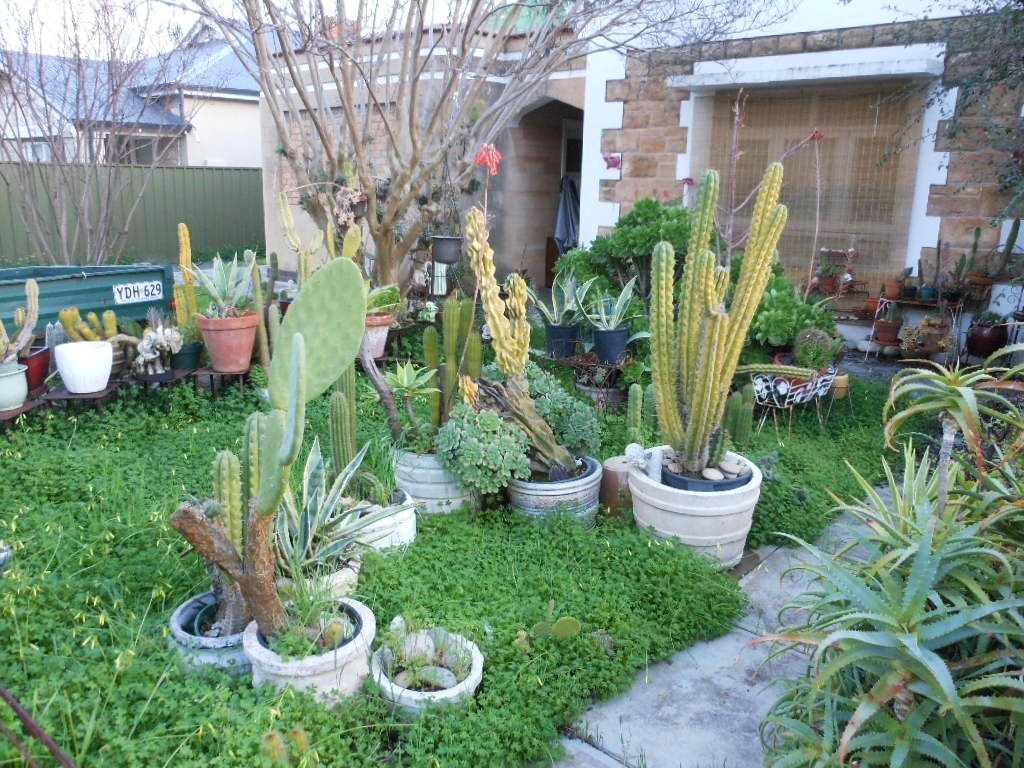Xeriscaping Tips For Container Gardens


If you're looking for a great way to conserve water in the garden, then xeriscaping may be the answer you've been looking for. You don't need to be a rocket scientist, you don't need a lot of space, and you don't need a lot of money to achieve a xeriscape effect in your garden. All you need are a few basic guidelines and some containers to get you started. In fact, container gardens can be a great alternative for people with little space and limited budgets. Containers are naturally water thrifty and available in a wide assortment that will fit nearly style or budget.
Choosing Containers for Your Xeriscaped Container Garden
When you begin choosing suitable containers for your garden, you should consider size and material carefully. Since container gardens are essentially self-contained, the larger they are the less watering is needed. For example, a larger pot holds a larger volume of soil, which in turn can store more moisture than a pot half its size. As for their material, plastic and glazed clay will retain water better than unglazed terra cotta or wood; however, as long as the container provides adequate drainage, nearly any type of container can be used.
Choosing Plants for Xeriscaping in Containers
When choosing plants for your xeriscape container garden, look for those that will provide seasonal interest. For instance, don't limit the garden to just flowering plants; there are many plants that can be used strictly for their interesting foliage color or texture. By choosing plants carefully, you can create a container garden that will not only last year after year but will be water efficient as well. There are a variety of plants that will accommodate containers, not to mention complement your xeriscape theme. Of course, not all plants are well suited to container gardens, but overall many plants not only thrive in containers but will tolerate hot, dry conditions as well. Some of these include annuals like:
A number of perennials can be used in a xeriscape container garden such as:
There is even room for herbs and vegetables in the xeriscape container garden. Try growing oregano, sage, rosemary, and thyme. Vegetables actually do quite well in containers, especially the dwarf or bush varieties. There are also numerous ornamental grasses and succulents that perform nicely in containers as well.
Tips for Planting in Xeriscaping Containers
Growing plants in containers rather than the ground helps to conserve water as container-grown plants result in less water waste. Containers can also be moved around easily so if the weather gets too hot, just move the garden to a lightly shaded area to prevent the containers from drying out as quickly. Using the proper soil is also important. Don't use soil from the ground unless it has been thoroughly amended with compost beforehand; otherwise, this soil will become compacted, resulting in unhealthy plants. For longer-lasting blooms and increased water-holding capacity, try using an amended potting mix that provides a loose, airy environment for the plants. Once you've gotten all the basics covered, decide on where the garden will be placed. Generally, anywhere that receives at least 6 hours of full sun is enough, and many plants perform well with late, afternoon shade too. Try to stay clear of placing the container garden close to brick or concrete, as these tend to soak up heat and will ultimately cause your containers to overheat and dry up, requiring more frequent watering. The point of xeriscape is to reduce watering needs. Although the xeriscape container garden will use less water than similar plantings in the ground, depending on your particular climate, the size of the container, its placement and the plants selected, you may need to water them about once a day. However, if you stick with drought-tolerant plants in large containers receiving afternoon shade, this can be reduced to only every other day. To reduce the amount of watering needed even more, you can go another step further by using mulch. Mulch slows evaporative water loss from the surface and insulates the soil, thus retaining more water. Containers can also be more efficiently watered by using collected water from rain barrels. This not only saves money on your water bill, but natural rainwater is much healthier for your plants as it is full of minerals.
Sign up for the Gardening Know How newsletter today and receive a free copy of our e-book "How to Grow Delicious Tomatoes".

Nikki Tilley has been gardening for nearly three decades. The former Senior Editor and Archivist of Gardening Know How, Nikki has also authored six gardening books.